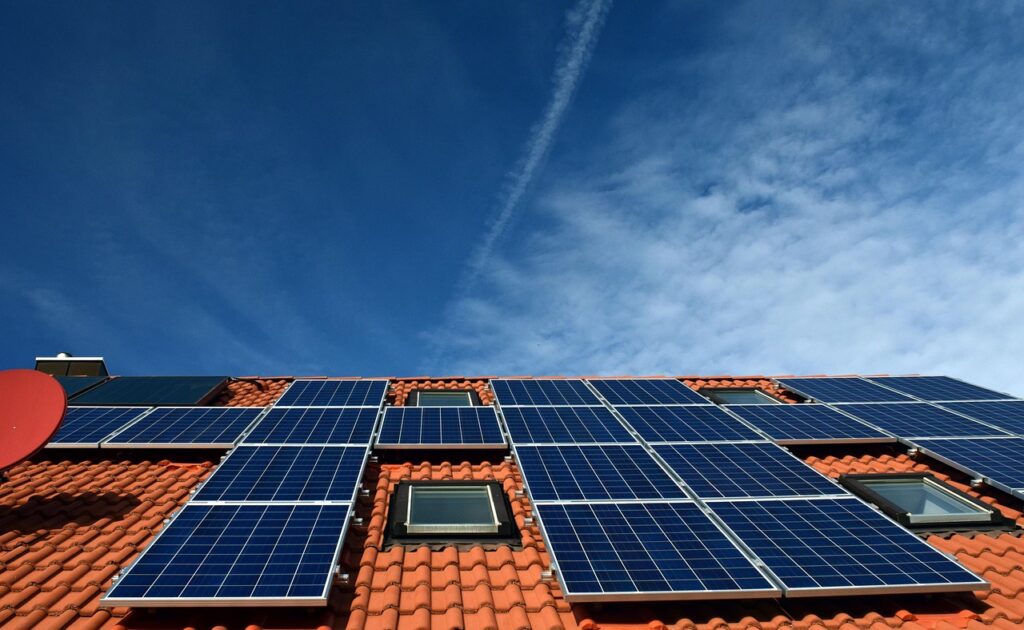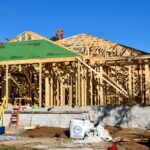Building integrated solar panels, also known as Building-Integrated Photovoltaics (BIPV), are solar technologies incorporated directly into the structural elements of a building. Instead of mounting traditional panels on rooftops, these systems replace or cover parts of the building envelope such as roofs, façades, or windows, creating dual-function surfaces that generate electricity while maintaining architectural appeal.
This approach allows buildings to produce clean energy without the need for separate solar installations, blending renewable power generation seamlessly into the design. The integration can reduce material costs by combining solar cells with common building materials, improving both energy efficiency and aesthetics.
As solar technology advances, BIPV offers a practical solution for modern construction and retrofits, enabling homeowners and developers to harness solar power in ways that complement the built environment rather than detract from it.
Key Aspects of Building Integrated Solar Panels
Building integrated solar panels combine energy generation with essential building components. They differ from traditional solar panels in function and design, requiring specific materials and architectural planning to optimize both performance and aesthetics.
Types of Building Integrated Photovoltaics
Building integrated photovoltaics (BIPV) come in several forms based on their placement and function. Common types include:
- Roof-integrated panels: Replace traditional roofing materials with solar cells.
- Façade-integrated panels: Incorporated into exterior walls, often as cladding or shading elements.
- Window-integrated panels: Semi-transparent solar cells are embedded into glass to allow light while generating electricity.
These variations allow buildings to generate electricity without needing separate solar installations. Each type is chosen based on building design, orientation, and energy goals.
Core Technologies and Materials
The core technologies in BIPV involve photovoltaic cells embedded in construction materials. Silicon-based solar cells dominate, but newer options include thin-film and semi-transparent cells.
Materials must balance durability, efficiency, and integration with building elements. Common materials:
- Monocrystalline and polycrystalline silicon: High efficiency, used in opaque panels.
- Thin-film technologies (CIGS, CdTe): Flexible and lightweight options.
- Semi-transparent photovoltaics: Used in windows, combining light transmission with power generation.
Encapsulation and framing materials also affect longevity and weather resistance, critical for building safety and function.
Design and Aesthetic Considerations
BIPV requires coordination between architects, engineers, and photovoltaic specialists. Design integrates solar panels as structural or decorative elements. This involves:
- Selecting photovoltaic materials that complement building color and texture.
- Considering panel placement for optimal sunlight exposure and shading effects.
- Balancing visual appeal with energy efficiency, as aesthetics influence material choice and system layout.
Customizable shapes and colors of solar panels support diverse architectural styles, enabling buildings to meet energy needs while maintaining visual harmony.
Installation, Performance, and Applications
Building-integrated solar panels combine construction elements with photovoltaic technology, affecting how they are installed, how efficiently they generate energy, and where they are best applied. These panels serve both functional and aesthetic roles, adapting to various architectural needs and project types.
Integration Methods in Architecture
Building-integrated solar panels are designed as components of the building envelope, such as façades, roofs, or windows. They replace traditional materials, becoming parts of the structure rather than add-ons.
Common integration forms include:
- Solar roofing tiles that mimic traditional shingles.
- Transparent photovoltaic glass used in windows and skylights.
- Facades with embedded solar cells that retain design style while generating power.
This seamless architectural integration requires careful coordination between solar technology and building design to maintain structural integrity and aesthetic appeal. Installation can be more complex than traditional panels, involving specialized mounting hardware and precise alignment to existing building frameworks.
Energy Efficiency and Output
Building-integrated solar systems combine photovoltaic electricity generation with energy-saving design by replacing less efficient building materials. Their efficiency depends on factors like orientation, shading, and panel type.
BIPV panels often have slightly lower electrical output compared to traditional solar panels due to architectural constraints. However, innovations increase their efficiency, with some panels producing power while also managing thermal gains.
Maintenance like cleaning and damage inspection is crucial to maintain performance. Integration with building energy systems can also optimize energy use, for example, by combining PV output with heating or cooling functions.
Implementation in Residential and Commercial Projects
In residential buildings, integrated solar panels offer an attractive alternative to rooftop mounts, preserving home aesthetics and property value. They also simplify permitting by replacing standard building materials, which can speed installation.
Commercial projects benefit from larger façade or roof surfaces, allowing significant energy generation while contributing to brand image through visible sustainable design.
Typical applications include retrofit and new builds where energy codes or sustainability goals call for renewable generation embedded in architecture. Both sectors prioritize durability, weather resistance, and compliance with building regulations when selecting BIPV products.



